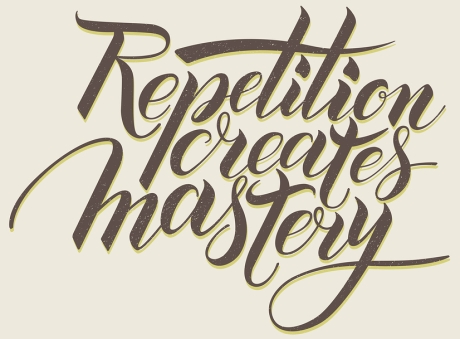By Robby
If you are new here please read this first.
Podcast: Play in new window | Download
VIDEO TRANSCRIPT BELOW:
Hi, guys! It’s Robby here from EnglishHarmony.com with another video blogpost.
Now, this time around, I’m going to be looking at the following question:
“How to provide lengthy answers?”
Say, for example, you are asked a question and the situation demands that you provide quite a lengthy answer. Normally, it’s totally fine to answer using very simple, short sentences. Actually, it’s one of the ways of getting your fluency back on track, and you may want to check out this particular article where I’m touching upon that subject, that there’s nothing wrong with speaking in very short sentences because, for most foreign English speakers who are having these fluency issues, it’s very challenging to speak using very long sentences.
Oftentimes, those people will get very confused and it’s all too overwhelming to handle that much information in one go.
It’s best to separate your thoughts into little, manageable pieces, right? But, other situations such as, for example, English exams, demand that you provide quite lengthy answers. Obviously, it just doesn’t cut it in situations such as exams if you just provide one, short sentence as an answer, right?
In most daily situations, that’s totally fine.
But, what to do if you find yourself in such a situation where you are actually required to provide quite a lengthy answer? And, as a matter of fact, this is a question asked by one of my blog commentators and here’s the exact question, right? I’m going to quote:
“I see you carry on for a long time discussing about a topic. How do you do this? Do you follow a certain method for a long time conversation on the topic? Please help me!”
How I Manage to Speak for a Long Time During My YouTube Videos

Alright. So, speaking of my own videos, all these videos I’m producing, right, I resort to a very simple technique.
It’s called: “Talking about the same thing all over and over again!”
It’s being repetitious. So, you could basically talk about a specific subject for 10, 20 seconds and then you return to the same subject again just from probably a slightly different angle, and then again, and again.
And, if you watch some other videos on YouTube, for example where people are discussing various issues, you will definitely notice this particular strategy, it’s a very simple thing. I wouldn’t be calling it a strategy. But, anyway, let’s call it that way, right?
Basically, a strategy of repetition is used all over the place. Everyone does it.
Being Repetitious Helps People Understand!

And it actually helps with perception. Sometimes, when you’re describing something in particular, the recipient of the information, the one who watches the video, the one who listens to you, obviously doesn’t understand the concept maybe.
So, it’s up to you to explain it to him and you need to be repetitious to hammer it home to that person. Yes, sometimes, they will understand what you mean just by saying it for the first time. But, most people have to be told simple things a few times all over and over again until it registers with them.
It’s a simple fact and I do it all the time in my videos. If you go back and check my, say, latest videos, I always – this is the way I structure my videos, right?
I define the issue, and then I mention a specific aspect of that issue, and then I probably mention another aspect, and then I just go back to the previous point I made just probably from a slightly different angle using a lot of synonyms maybe. You know?
Let’s say, for example, let’s just choose some random subject. What could it be? What could it be? Let’s choose this one. Inhalers or so-called electronic cigarettes, right?
Sample Topic – Electronic Cigarettes
“I’m trying to replace real cigarettes with these inhalers because these thingies don’t contain all those harmful substances that the cigarette smoke does. For starters, this is not smoke. This is just vapor, right? So, speaking of those harmful substances…”
You see, I defined the issue – the issue is the harmful substances contained by real cigarettes. And, now, I’m going back to it again. You see the thing is this is all redundant language. This is all those hesitation fillers. That’s the way I call them.
“You see, the thing is there’s plenty of harmful substances such as…” and then you list a number of them – “tar and radioactive substances. Some people actually say…” and this is something that I just thought of the moment I mentioned the radioactive substances, and I know for a fact that cigarette smoke contains them, right?
It opens up a whole lot more to talk about. Radioactive substances, and then you can mention all the vast array of chemical elements actually contained in cigarette smoke, right? And then you can talk about the fact that there’s about 2,000 chemicals discovered in smoke.
“So, it’s not just the nicotine which is the biggest detrimental substance that affects your health. It’s actually all those 2,000 other substances – and rocket fuel and, well obviously, not the exact rocket fuel, but the substances you can find in rocket fuel.”
You see how long I was talking about this particular subject for and I didn’t say an awful lot.
I just mentioned that there’s radioactive substances, things found in rocket fuel, and chemical substances, right?
But, the point is I was talking about pretty much the same thing!
I was beating around the bush so to speak, but that’s the whole point. That’s how you make the conversation lengthy. And bear in mind, this is not a conversation. This is just a monologue!
It’s a Speech, It’s Not a Conversation – You can Afford Being Repetitious!

This is a situation where you have to make yourself last long enough in the monologue to be understood, to express yourself clearly, and produce a very lengthy speech, right?
And even the last two sentences that I said, I named the same thing using different ways.
- You have to make yourself understood.
- You have to produce lengthy speech.
- You have to speak long enough.
- You have to make yourself last during the conversation.
It all pretty much describes the very same concept!
Well, obviously, it is a skill you have to develop. It’s nothing that you will develop just overnight. But, this is basically the strategy. You beat around the bush.
You define an issue, explain it, and then go back to it again by calling it other names, right?
But, basically, you touch upon the same subject. You’re going around in circles talking about the same thing from different angles. Call it different ways. And once you define something specific that actually opens up more opportunities to talk about related issues, do that by all means!
The moment I mentioned radioactive substances, I remembered the rocket fuel thing that I’d heard a while back, and I remembered the 2,000 chemical figure, and all that.
So, basically, that’s the strategy: You talk about the same thing all over again. Be repetitious. Don’t be afraid of beating around the bush!
Don’t Mind What Others Think
Some people will call it totally unnecessary.
They will probably blame you for using too much redundant language and talking about the same thing all over again, but that’s what you want.
This is actually your goal in this particular case, right?
Your goal is to provide a lengthy answer, right, a lengthy speech on a subject. And, believe me, most people who are listening to you are not going to see the negative aspect of your speech. They’re not going to necessarily spot the fact that you’re talking about the same thing all over again unless you actually repeat yourself like a robot.
But, you have to put things in different words. Rephrase yourself.
And then, say for example, if you deliver a five-minute long speech, right, you can define the initial issue. Talk about it for a while, provide a solution, or explain the issue. Then, revisit it again. The same thing, call it different names, reword it, use synonyms, and explain the same thing in various ways.
And then, when you’ve done that, you can actually return to the initial argument to reiterate the whole thing, basically to make it understood for those who probably didn’t get it the first time around.
And, when you have done that, there’s nothing to stop you to summarize the whole thing, right, to wrap it all up.
And, obviously, there’s a lot of phrases you can use. There is no magic bullet!
Use Plenty of Relevant Phraseology
There is no single piece of information that I could give to you right now which will make you somehow magically able to do it immediately. It’s an acquired skill. You have to practice obviously.
Practice is the key here!
But, this is just a strategy I’m giving you, right? And, obviously, going back to the phraseology, then there are a lot of phrases you can use.
“Going back to…”
So, basically, you explained something and then going back to the original subject – “I’d like to mention once more that…” and then you say whatever has to be said.
And, then, on the finishing note, “Let me just remind you once more” and
“To wrap it all up,”
“Let me just tell you again.”
You see?
So many different ways of returning to the original subject! Mention it again. And the bottom line is – this is a very good phrase – “The bottom line is…” and then you provide the final conclusion, right?
And, this way, you can actually explain a subject that you could have explained in 5 sentences in 10 minutes or in 20 minutes, and that’s exactly what I’m doing in my English Harmony videos.
If Everyone Said Just the Bare Minimum, Life Would Be Boring!

If I wanted to be very concise, very short and to the point, I would make these videos anywhere between 60 seconds and two minutes long, and I could explain most subjects during that particular timeframe, right?
But, would that make them engaging, interesting?
Would that make you think about the whole thing?
No, it wouldn’t because it’s the lengthy speech, the lengthy thing that makes people think about the whole thing again and again!
And when they hear me going on about the same thing again and again, it kind of registers with them. Do you know what I mean?
I’m a strong believer in this and I have – to tell you the truth – I have received some comments in the past telling me that I’m just talking about the same thing all over again, and it’s nonsensical, and it’s just beating around the bush, and those people don’t find my videos interesting.
But, there’s been only a few over the course of all these years.
So, I basically ignore all that opinion and I focus on those people who enjoy watching my videos, right?
And, obviously, you have to have the same kind of attitude. If you find yourself in a situation where you have to produce a lengthy answer, resort to this strategy. Repetition, repetition, repetition, reiteration, rephrasing, and then going back to the same subject and to wrap it all up, you bottom line the whole thing, and touch upon the main points again. And, yeah, that’s about it. That’s about it!
If You Have to Produce Long Speech, Repetition Is What You Gotta Do!
If someone finds this method boring, or offensive, or whatever, don’t care about those people’s opinion. Care about yourself. That’s you!
You want to speak at great lengths, you have to produce a long speech, and that’s what you do, right?
And most people do that, even those people who will probably tell you that you are just beating around the bush when they have to talk about something at great lengths. I don’t doubt for a second that they do the same thing because we’re all human beings, right? There’s only so much we can talk about. We have to expand on it, right?
If You Have Plenty of Facts to Mention – It’s a Different Story!
Obviously, if there’s a lot of facts you can mention about the specific topic, go for it. Yeah!
You can provide an awful lot of facts, and then you’re not going to be repeating yourself, and it’s going to be just one monologue, one speech where you provide all the facts in a timeline or whatever.
But, if it’s something that you are asked suddenly and you have to start talking about it, this is the way forward.
You have to say something, then provide a conclusion, then go back to the same thing just from a different angle, rephrase it. And, that’s what I’m doing now. I’m repeating myself all over again. This video is probably going to be longer than ten minutes, but I don’t mind because I’m sure this helps. This helps you to understand what I exactly mean with this whole strategy.
And, obviously, you’re welcome to check out this blogpost about planning your speech and, specifically, about planning your answers when you are asked unexpected questions, right?
And it’s quite relevant when touching upon this particular subject of how to produce a lengthy answer. But, I actually haven’t mentioned this particular strategy of repetition, reiteration in that blogpost, right?
So, combine the knowledge you gained from this video plus that blogpost and I really, really hope that the benefits from watching this video or reading that article will contribute into your ability to produce lengthy answers.
Thanks everyone for watching this video!
If you have any questions, please don’t hesitate to publish them in the comments section below.
Thanks and bye-bye my friends! Take care!
Robby 😉
P.S. Would you like to find out why I’m highlighting some of the text in red? Read this article and you’ll learn why it’s so important to learn idiomatic expressions and how it will help you to improve your spoken English!
P.S.S. Are you serious about your spoken English improvement? Check out my English Harmony System HERE!
P.S. Are you serious about your spoken English improvement? Check out the English Harmony System HERE!


